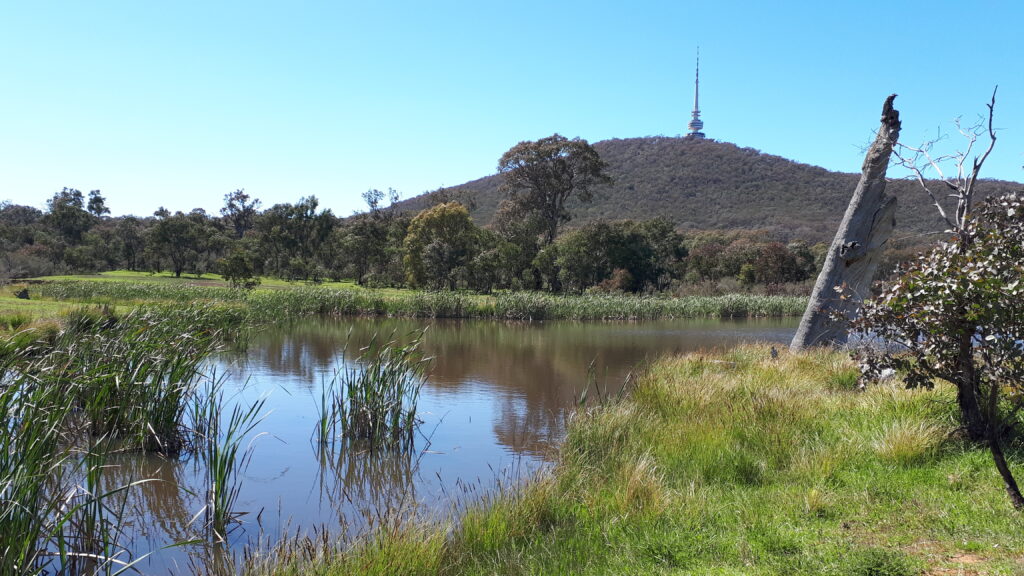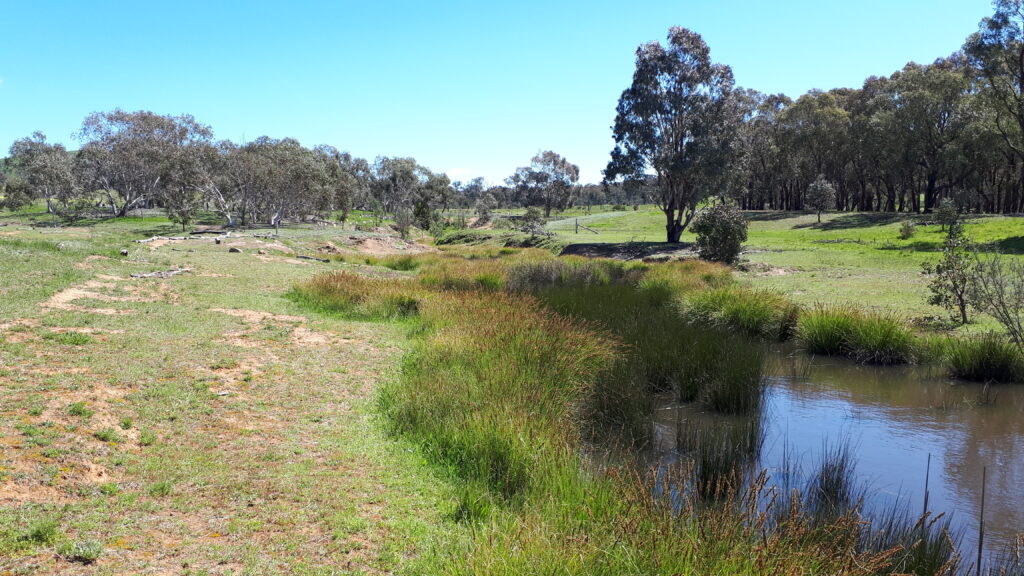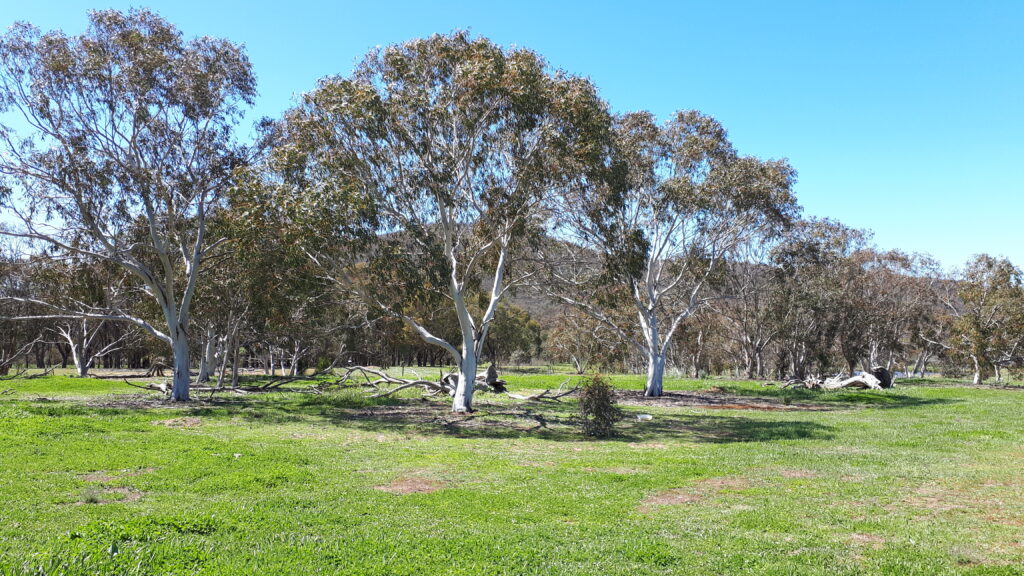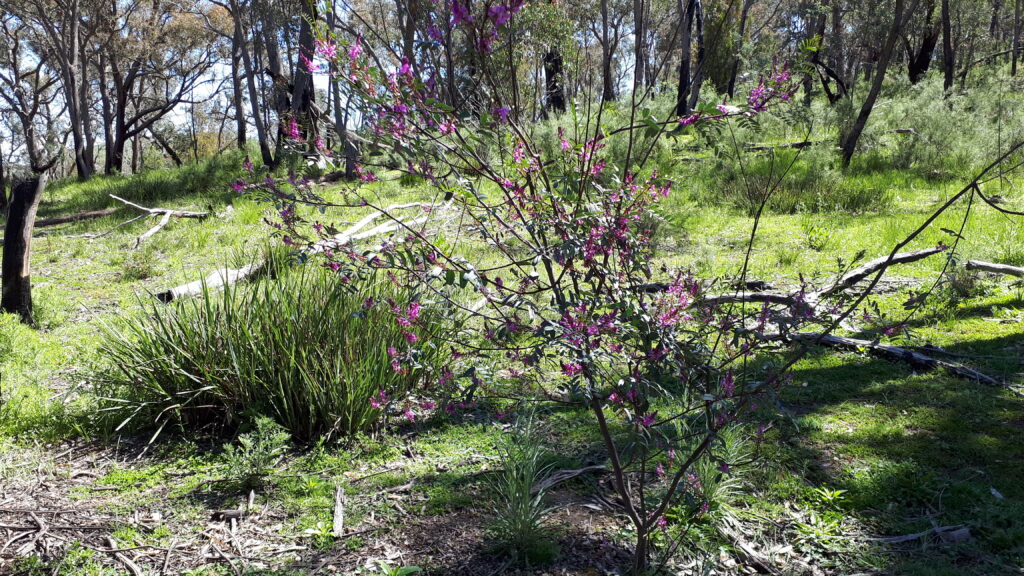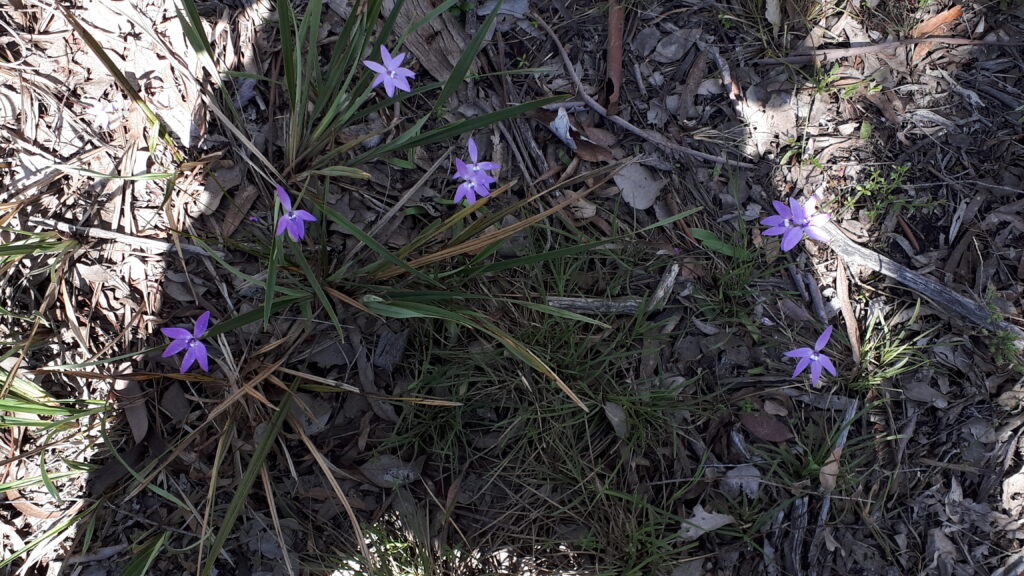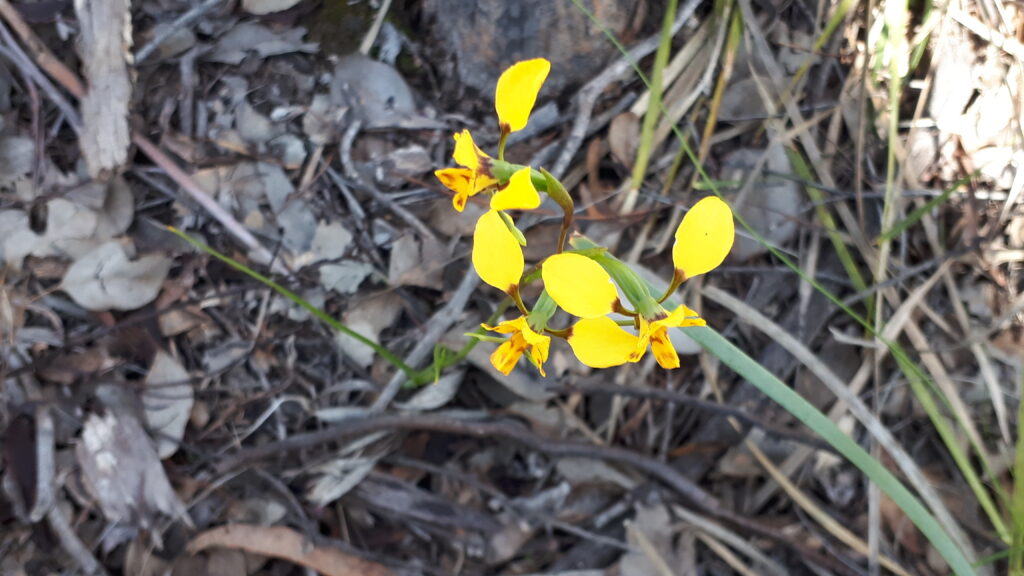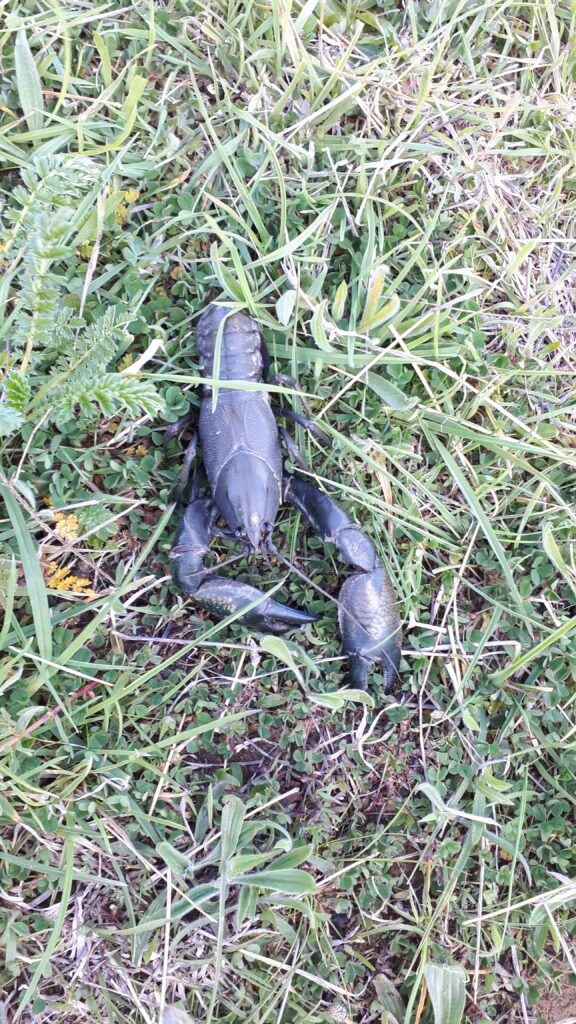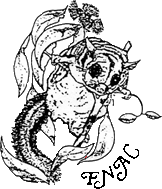Aranda Frost Hollow to Forest Walk
Ten Field Natters gathered off William Hovell Drive with the aim of taking the walk through oncegrazed paddocks to the SW corner of Aranda Bushland. Whilst drivers sped past we adopted naturalists’ paces finding organisms and remarkable sights every few metres. We were guided by and indebted to Kevin and Sonja’s familiarity with their long-term ‘suburban’ ParkCare volunteering site.
Kevin S had a copy of Our Patch at the ready, an indispensable Field Guide to local vegetation since its publication in 1997. The Guide’s photographs were way ahead of their time showing the enthusiasm and botanical expertise of the Aranda Bushland volunteers who compiled it, the first colourful guide to the region’s native flora.
Swathes of crimson invading across the short grass introduced us to Bartsia, Parentucellia latiflora though equally swathe-like, in miniature, were hundreds of Common Sunray, Triptilodiscus pygmaeus plants taking advantage of the clayey drainage lines where soils and slopes have been damp since ‘the drought broke’.
The ex-paddock’s grasses are eaten down by ‘roos, not seen until we’d reached the woodland. Although green overall the frost-hollow effect across the still partly fenced area could be seen. The south facing land’s too cold in winter for most trees and shrubs to survive beyond germination and kangaroos and stock would also have eaten many seedlings and saplings since settlement.
Friends of Aranda Bushland (FOAB) have succeeded in reducing the weed infestations. We saw a few St John’s Wort rosettes taking advantage of rains and the approach of spring temperatures. (In recent weeks reported sightings of the biocontrol beetles have come through).
In the distance by 400 m and surrounded by another dominant, Capeweed, Jim Arnold was backpack spraying individual weeds. Evidence of his years of persistence were visible; yellowing-off Flatweed being one target species.
By mid-October, and once the extent of the Paterson’s Curse outbreak became obvious, interesting articles and opinions about coping with invasive species emerged. Does spraying cause too much collateral damage? Other weed species take advantage of created bare spaces. Would scything, brush-cutting and slashing the flowering stems reduce the number of seeds produced? As the debris rotted down nutrients would be returned to soils and some desirable species might be protected by the dying biomass.
Thus the first part of the walk provided a classroom about the management of weeds and the arrogant folly of imposing European agricultural methods onto Australian ecological systems and fragile, leached soils, the distain 200 years ago, for Indigenous peoples’ caringfor-country practices and wisdom from millennia of lived experience.
The erosion gully gives striking evidence of colonisers seeking to dominate the continent’s foreign nature. Rainwater flowing from the bushland and towards the Molonglo River (now of course, Lake Burley Griffin) has rushed through land cleared of vegetation, creating a chasm 3 m deep in places.
Hard-hoofed stock compacted soils that were no longer aerated by the diggings of small Australian native diggers and burrowers. Until cats and foxes decimated populations of the native mammals who regenerated by spreading fungal spores and seeds, soils also absorbed vast volumes of flowing rainwater. Leaf and bark litter kept soils cooler, deflected raindrops and hosted myriads of invertebrates and larvae.
Trees’, shrubs’ and native grasses’ deep roots held soils together and absorbed rainwater, which once slowly spread, rehydrating, across the landscape.
FOAB have replicated systems and ancient processes by building leaky weirs across the gully and the land’s slopes to divert rainwater away from rushing down and taking
eroded topsoil, debris and fertilisers towards the lake. The coir logs trap debris and seeds. Sedges have been planted and have multiplied in the recovering gullies and around the several dams also built to capture sediment.
Australian Reed Warblers, recently returned to the region to breed, called from the reed beds around the dams.
Ephemeral wetlands provided us with a suite of different species to identify, marvel at and discuss. They added to the landscape’s diversity of habitats.
There’s signage along the walk’s route explaining each habitat. Kevin’s additional experiences and expertise enhanced the Snow Gums’ stories. The Eucalyptus pauciflora are at the northern edge of their natural range here. Newly planted
ones, grown by Greening Australia volunteers at Aranda, seemed to be doing well. Memories of High Country Snow Gums bent into evocative shapes by each alpine
winter’s snowfalls may have flitted through our minds.
A large dam had been built to capture sediment before it reached Lake Burley Griffin and made the lake shallow. Dams restrict water’s natural patterns and prevent those
same nutrient-laden sediments from spreading across and enriching the paddock’s or the grasslands’ soils.
Knowing what we now appreciate, these dams and the wetlands being built around the ACT are expensive remedies for problems we have created by not understanding the land we assumed was ours.
Wood ducks rested or assessed us from the dam bank’s elevation. Frogs called from the wetlands and from near the waters’ edges. They and the Reed Warblers reminded me of Charlie Massy’s Call of the Reed Warbler and its messages of hope for new futures for the land; hope for the regeneration of land, the reappraisal of living styles needed and presaged by Massy, Martin Royds, Peter Andrews, Allan Savory and the thousands of others who are genuinely working with nature as stewards and custodians of land rather than exploiters.
Even in the Grassy Woodland there’s still evidence of the stock camps around older trees. Shade has attracted stock to shelter, their dung enriching the soil driving the season’s’ rampant growth of introduced species from the soil’s seedbank and deterring native species that, in dying, reject so much fertility.
We reached the Aranda Bushland through a log step-through onto a maintenance and fire access track that John knew as a branch of the Old Weetangera Road, partly featured in an earlier Field Natter. He and Janet, cycled from O‘Connor and have been
exploring Flea Bog Flat.
The untidiness of the bush nurtures and shelters the array of species and specials we found. Although Hibbertia’s yellow blooms turned to the sun they still welcomed us.
Indigofera australis, scattered at first showed, then showing a great blush of shrub-height pink deeper into the woodland. Then came the orchids….
It was difficult to place our next footsteps for fear of treading on native species. Alison kept count of the number of orchids she’d photographed for Canberra Nature Map. Patricia was adept at finding the Diuris in bloom or pre-opening even without the shafts of sun highlighting their presence. Multiflowered specimens pointed to the complexities of identifying distinct species within the Diuris family.
A cluster of endangered eucalypts with only a few mid-storey shrubs is a residual Yellow Box-Blakely’s Red Gum Grassy Woodland section with iconic pre-settlement trees just south of the floriferous bushland. Signage explains the significance of
and threats to Grassy Woodlands. One of the threatening processes was present in the form of several Noisy Miners. They’re an over-assertive native species that, like Red Wattlebirds actively chase other species away regardless of whether those smaller birds compete for food. Insectivorous woodland birds are pest-control species for the eucalypts. The small birds’ absence stresses mature trees.
There’s a dead Apple Box, Eucalyptus bridgesiana circled by offspring and stock-camp weeds. At least it’s left to decay there. Previously, Canberra’s reserves were regularly denuded by those who harvested fallen timber for wood-fired heaters. A concerted awareness campaign has reduced this occurrence and fallen suburban timber is quite often placed in reserves to improve the ecosystems’ regenerative processes. Beetles’ larvae and other invertebrates’ activities in decaying wood provide food for a range of bird and mammal predators.
Kevin showed us a Yellow Box that was also surrounded by its offspring. This reminded us that eucalypts are able to inhibit the germination of their seeds and delay the growth of saplings until their own health is in serious decline. The capacity
of some plants to inhibit others’ growth fascinates me but I’d probably need another lifetime to delve further into those mechanisms. At least humans who have ‘recently’ invented NBN, now know more about the vast, influential networks of fungi that link all plants and convey messages through the bush’s complexities. We did find a few
toadstools, evidence of fungi’s fruiting bodies. Overall it’s been as huge a fungi season as it has for wildflowers.
– Rosemary Blemings
